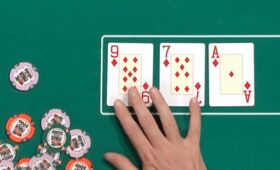Chinese poker is a fun, addictive card game that can be played with any number of players. It can be difficult to learn, but with persistent practice and careful planning you will be able to master this exciting card game. This article will provide a general overview of the rules of chinese poker and some tips for playing it well.
Keeping Score
There are many ways to keep track of points in Chinese poker. The most common is to use a point-to-dollar system where each player agrees on the monetary value of each point before the game starts. Players may also choose to play without any money at all. In either case, it is important to agree on a scoring system before the game begins in order to avoid any ambiguity or confusion.
Dealing
The “dealer” deals 13 cards to each player. Then each player arranges their cards into three chinese poker hands: two 5-card hands (the middle and back) and one 3-card hand (“the front”), trying to make the highest-ranking hands that they can. The back hand must be stronger than the middle, and the front must be worse than the middle. It is also possible to form a natural, which pays 3 units and must be declared before the comparing of the middle and back hands.
To win a payout, you must have the best front hand, the strongest middle hand and the lowest back hand. Alternatively, you can win a payout by forming the most powerful natural and displaying it before your opponents. The comparing of the hands takes place in a clockwise direction, with the player to the left taking first.
When a hand is compared, each player must check whether their cards form part of any melds. To form a meld, your cards must be touching in either vertical or horizontal rows. The melds are ordered according to the rules of the specific game, and this hierarchy can be found in any Chinese poker book.
If you can’t form a meld, then your hand is dead and you must pay three points to each opponent. You can also surrender if you think your hand is too weak to beat any of your opponents’ hands. However, this is generally only a good idea if you have a pair of eights or better in your front hand, and you don’t have a flush or straight in your back hand.
Some chinese poker games, such as Criss Cross and 7-2 Lowball, have some interesting twists to the gameplay. For example, in this variant the middle hand is played as a 2-7 low hand (similar to Razz) and straights and flushes count against your hand. Additionally, the front and middle hands are compared head-to-head, which can speed up gameplay.
